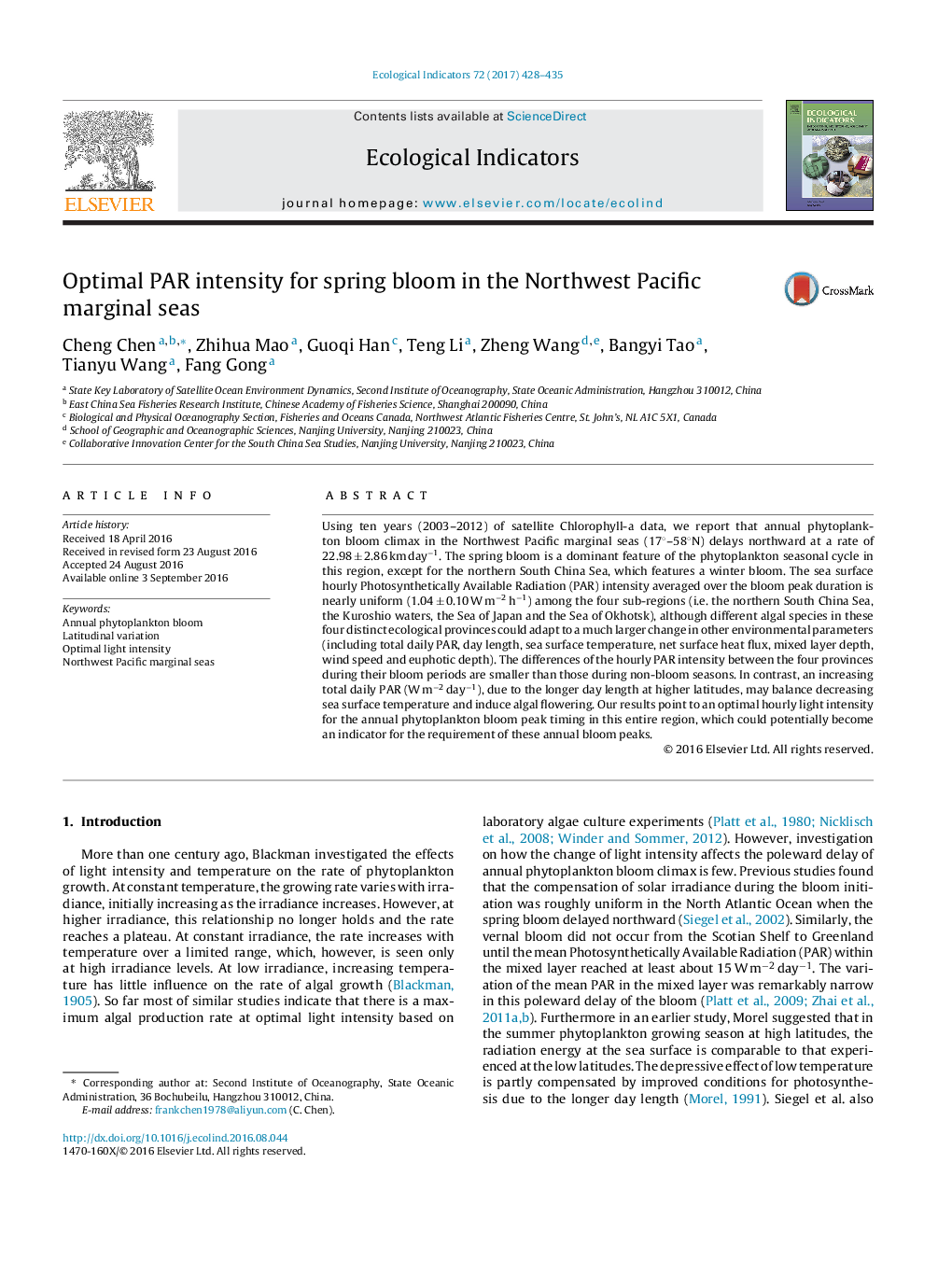| کد مقاله | کد نشریه | سال انتشار | مقاله انگلیسی | نسخه تمام متن |
|---|---|---|---|---|
| 6292794 | 1617130 | 2017 | 8 صفحه PDF | دانلود رایگان |
- Annual spring bloom in the Northwest Pacific marginal seas delays northward at 22.98 ± 2.86 km dayâ1.
- Hourly PAR intensity over the bloom is uniform in these delays compared with other parameters.
- Difference of PAR intensity among provinces on bloom period is smaller than that at non-bloom season.
Using ten years (2003-2012) of satellite Chlorophyll-a data, we report that annual phytoplankton bloom climax in the Northwest Pacific marginal seas (17°-58°N) delays northward at a rate of 22.98 ± 2.86 km dayâ1. The spring bloom is a dominant feature of the phytoplankton seasonal cycle in this region, except for the northern South China Sea, which features a winter bloom. The sea surface hourly Photosynthetically Available Radiation (PAR) intensity averaged over the bloom peak duration is nearly uniform (1.04 ± 0.10 W mâ2 hâ1) among the four sub-regions (i.e. the northern South China Sea, the Kuroshio waters, the Sea of Japan and the Sea of Okhotsk), although different algal species in these four distinct ecological provinces could adapt to a much larger change in other environmental parameters (including total daily PAR, day length, sea surface temperature, net surface heat flux, mixed layer depth, wind speed and euphotic depth). The differences of the hourly PAR intensity between the four provinces during their bloom periods are smaller than those during non-bloom seasons. In contrast, an increasing total daily PAR (W mâ2 dayâ1), due to the longer day length at higher latitudes, may balance decreasing sea surface temperature and induce algal flowering. Our results point to an optimal hourly light intensity for the annual phytoplankton bloom peak timing in this entire region, which could potentially become an indicator for the requirement of these annual bloom peaks.
Journal: Ecological Indicators - Volume 72, January 2017, Pages 428-435
